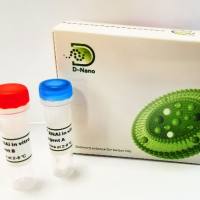In Vitro Transcriptions
互联网
426
The process of transcriptron in which a DNA template is used to derive RNA copies is a fundamental process in prokaryotic
and eukaryotic cells The recaprtulatron of these processes in cell-free systems (m vitro transcription) has led to a number
of powerful techniques for studying gene structure and regulation The transcrrptron machmery of prokaryotes is much simpler
than that of eukaryotes, with a single RNA-polymerase enzyme composed of a number of polypeptide chains responsible for RNA
synthesis Eukaryotrc transcrrptron is more complex, with three types of RNA polymerase involved RNA-polymerase II holoenzyme,
which transcribes genes that are translated into proteins, is a complex mvolving a large number of proteins in addition to
core RNApolymerase II enzyme In addition to the holoenzyme, a complex array of proteins is also mvolved in controlling the
rate of mmatron of transcription, and the regulation of a gene may involve a suite of transcription factors bmding to the
promoter and enhancer sequences The structure of the eukaryotic-transcription machinery and its regulation is being explored
using in vitro transcriptron systems, and a range of different approaches are being used. A large effort has been put into
identifying, cloning, and purifying components of the transcriptional complex and the reconstitution of transcription Other
studies use nuclear extracts to study the regulation of specific genes In addition to nuclear transcriptton, eukaryotes also
have transcriptional machinery in organelles The transcriptional machinery of chloroplasts and mitochondria is similar to
prokaryotic orgamsms, and in vitro transcnptron systems have been developed to study these systems (1
,2
) This chapter will deal with in vitro transcriptron by eukaryotic polymerase II (class II transcrrption) and the in vitro
generation of RNA for study of eukaryotic transcription









